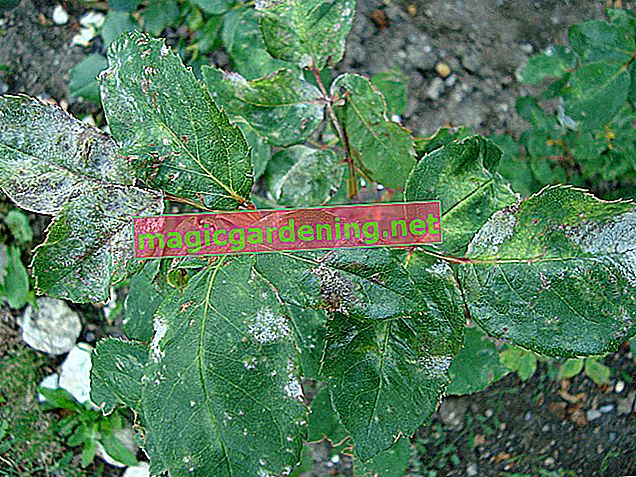
How often do I water a bromeliad?
The same applies to all bromeliads that they only receive lime-free, room-warm water. In which form and how often it is poured depends on the individual habitus of your bromeliad. How to do it right:
- Potted bromeliads: Pour water into the funnel (4.63 € on Amazon *), top up regularly and replace every 4 weeks
- Tied bromeliads: spray daily in summer and 3 times a week in winter with soft water
also read
- How to properly water a bromeliad
- What to do when a bromeliad flower dries up
- Bromeliad flower has finished blooming - what to do?
It is important to note that the substrate on potted bromeliads must be kept slightly moist. The intervals at which you water depend on the season and the local conditions at the location.
How do I properly fertilize the bromeliad?
The majority of bromeliads take up water and nutrients through their leaves. The roots only serve to stabilize in the substrate or on a base. The demands on nutrient intake are correspondingly modest. From April to October, add a liquid bromeliad fertilizer to the irrigation water every 2 to 3 weeks. Epiphytic species can be fertilized using the spray mist.
Is cutting part of the bromeliad care routine?
Bromeliads are not pruned. Over the years, older leaves may be drawn in, turn yellow and dry up. In this case, it is beneficial to wait for the plant to release the leaf. It can be removed from the rosette with a light pull without causing cuts.
If you find a sheet that has been drawn in as a disruptive factor in its appearance, cut it out. Ideally, use a disinfected scalpel or an extra sharp knife. Then dust the cut wound with primary rock or charcoal ash to prevent diseases and pests.
How do I care for a faded bromeliad?
Since the opulent inflorescence consists of strong, colorful bracts and rather inconspicuous, real flowers, the flowering time of a bromeliad can last for months. Sooner or later the floral spectacle is over and will never be repeated with this plant. However, this is no reason to dispose of the faded bromeliad prematurely, because the offspring are already sprouting at its base.
By continuing the previous care program undiminished, you give the daughter plants enough time for growth. This patience is rewarded with young bromeliads for free. This is how it works:
- Continue to water and fertilize a withered bromeliad in a light, warm location
- Cut off daughter plants with their own leaf rosette when they are at least 10 cm tall
- Poth each child in bromeliad and pour
To encourage growth after separation from the mother plant, put a plastic bag over the nursery pot for a few weeks. Pour soft, warm water into the small rosette of leaves and moisten the substrate as well. The hood has done its job when new leaves develop in the small rosette.
Which diseases and pests can be expected?
In our living and working rooms there are bromeliads far from their home. As a result, they are more susceptible to disease and pests than native houseplants. We have compiled the most common problems in the following overview with tips for prevention and control:
| Diseases and pests | prevention | Combat |
|---|---|---|
| Brown leaf tips | Spray regularly | Cut off, increase humidity, change location |
| No bloom | Bright, warm location without blazing sun | Place under a glass hood with fully ripe apples |
| Leaf rot due to fungal attack (Colletotrichum crassipes) | Avoid temperature fluctuations and waterlogging, fertilize regularly | Administer or dispose of fungicide |
| Spider mites | Spray regularly | Take a shower and wipe with a cloth soaked in alcohol |
| Aphids | No nitrogen-stressed fertilization | Shower, soft soap solution |
Bromeliads are very sensitive to chemical agents used to fight diseases and pests. The use of excessively sharp preparations causes extensive necrosis on the ornamental leaves of numerous species, which inevitably leads to the death of the entire plant.
When is a bromeliad repotted?
Once the bromeliad has completely rooted its tub, repot the plant in early spring. This measure is also on the program when the floral jewelery has assumed such a volume that it could tip over. Choose a tilt-proof planter that is 5 to 10 cm larger in diameter. Pour fresh bromeliad over a drainage made of pottery shards. Put the bromeliad in such a way that the previous planting depth is preserved and water.
Tips
Tropical bromeliads do not require any special precautions for healthy wintering. During the cold season, you only have to ensure that the temperature at the location does not fall below 14 degrees Celsius. Since the plants almost stop growing due to the lack of light, the nutrient supply is stopped from November to February.








